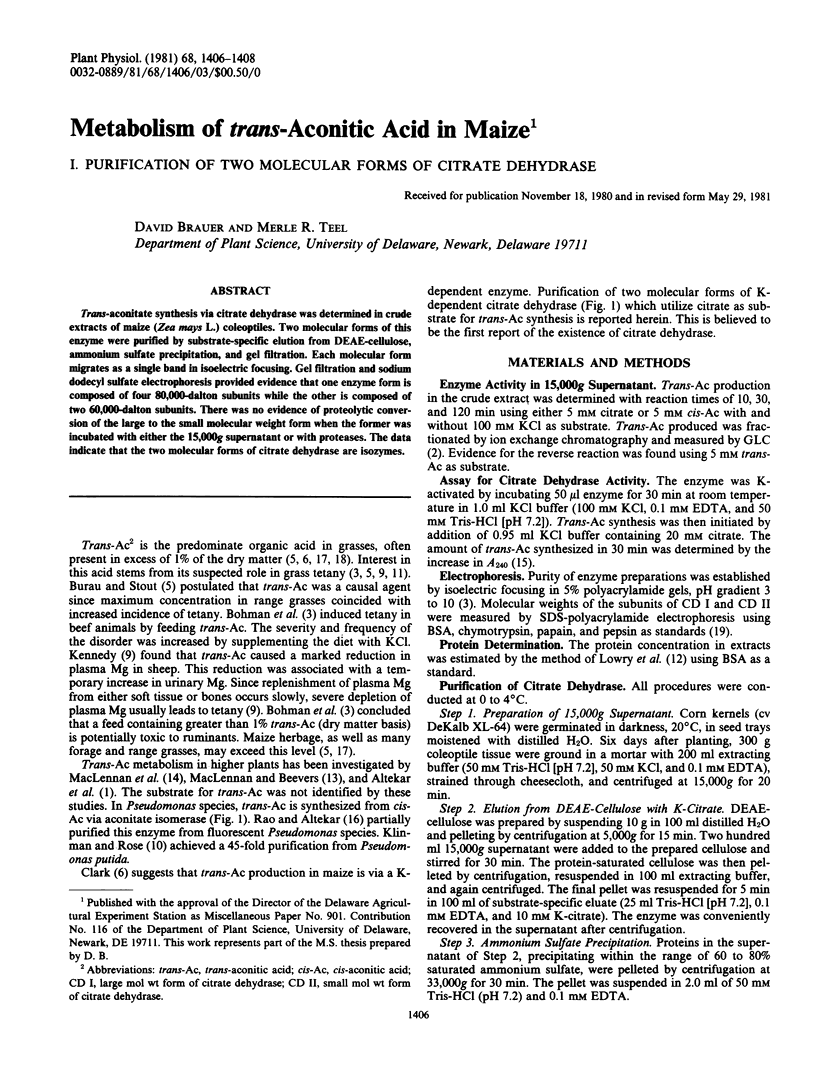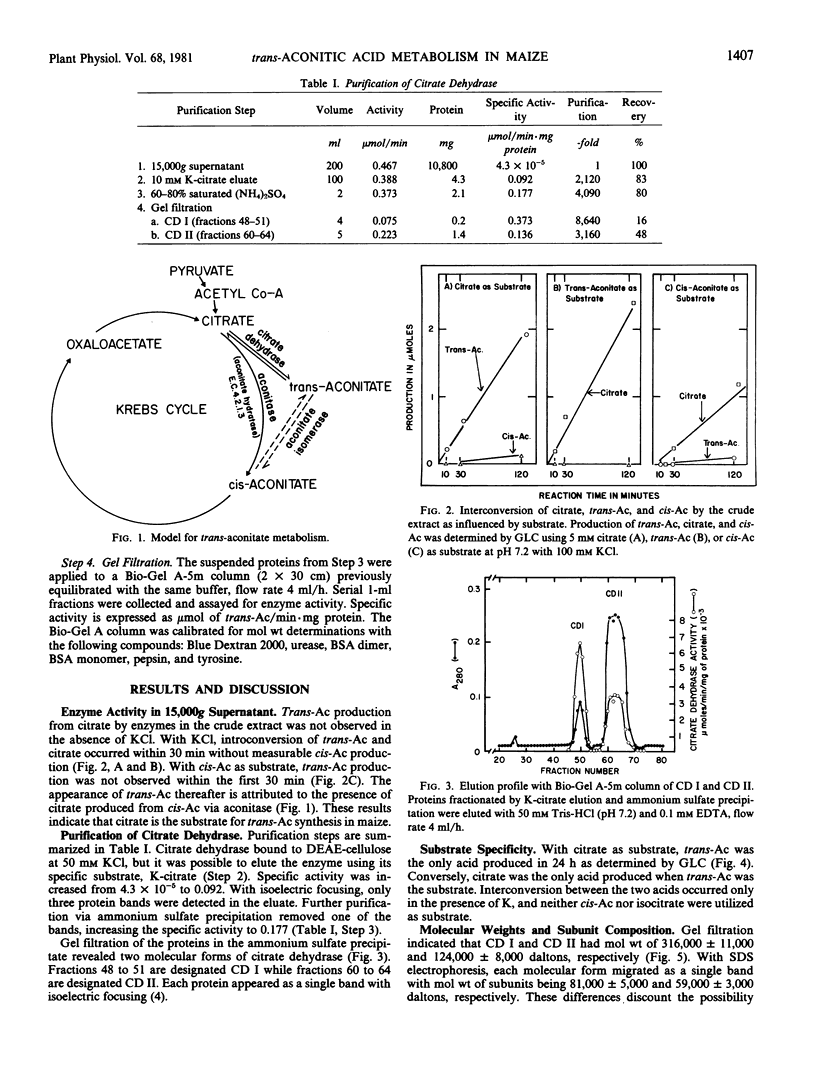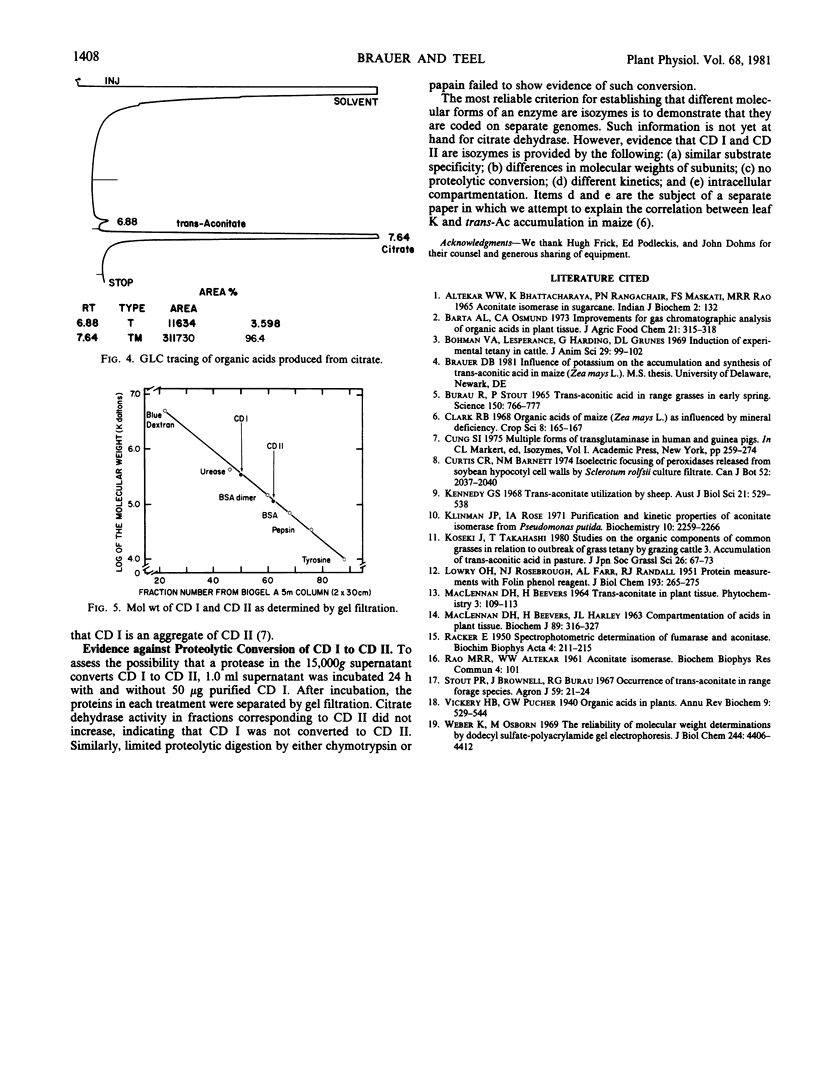Abstract
Trans-aconitate synthesis via citrate dehydrase was determined in crude extracts of maize (Zea mays L.) coleoptiles. Two molecular forms of this enzyme were purified by substrate-specific elution from DEAE-cellulose, ammonium sulfate precipitation, and gel filtration. Each molecular form migrates as a single band in isoelectric focusing. Gel filtration and sodium dodecyl sulfate electrophoresis provided evidence that one enzyme form is composed of four 80,000-dalton subunits while the other is composed of two 60,000-dalton subunits. There was no evidence of proteolytic conversion of the large to the small molecular weight form when the former was incubated with either the 15,000g supernatant or with proteases. The data indicate that the two molecular forms of citrate dehydrase are isozymes.
Full text
PDF


Selected References
These references are in PubMed. This may not be the complete list of references from this article.
- Altekar W. W., Bhattacharyya P. K., Rangachari P. N., Maskati F. S., Rao M. R. Aconitate isomerase in sugar cane. Indian J Biochem. 1965 Jun;2(2):132–133. [PubMed] [Google Scholar]
- Bohman V. R., Lesperance A. L., Harding G. D., Grunes D. L. Induction of experimental tetany in cattle. J Anim Sci. 1969 Jul;29(1):99–102. doi: 10.2527/jas1969.29199x. [DOI] [PubMed] [Google Scholar]
- Burau R., Stout P. R. Trans-Aconitic Acid in Range Grasses in Early Spring. Science. 1965 Nov 5;150(3697):766–767. doi: 10.1126/science.150.3697.766. [DOI] [PubMed] [Google Scholar]
- Kennedy G. S. Trans-aconitate utilization by sheep. Aust J Biol Sci. 1968 Jun;21(3):529–538. doi: 10.1071/bi9680529. [DOI] [PubMed] [Google Scholar]
- Klinman J. P., Rose I. A. Purification and kinetic properties of aconitate isomerase from Pseudomonas putida. Biochemistry. 1971 Jun 8;10(12):2253–2259. doi: 10.1021/bi00788a011. [DOI] [PubMed] [Google Scholar]
- LOWRY O. H., ROSEBROUGH N. J., FARR A. L., RANDALL R. J. Protein measurement with the Folin phenol reagent. J Biol Chem. 1951 Nov;193(1):265–275. [PubMed] [Google Scholar]
- Maclennan D. H., Beevers H., Harley J. L. 'Compartmentation' of acids in plant tissues. Biochem J. 1963 Nov;89(2):316–327. doi: 10.1042/bj0890316. [DOI] [PMC free article] [PubMed] [Google Scholar]
- RACKER E. Spectrophotometric measurements of the enzymatic formation of fumaric and cis-aconitic acids. Biochim Biophys Acta. 1950 Jan;4(1-3):211–214. doi: 10.1016/0006-3002(50)90026-6. [DOI] [PubMed] [Google Scholar]
- RAO M. R., ALTEKAR W. W. Aconitate isomerase. Biochem Biophys Res Commun. 1961 Feb 24;4:101–105. doi: 10.1016/0006-291x(61)90355-2. [DOI] [PubMed] [Google Scholar]
- Weber K., Osborn M. The reliability of molecular weight determinations by dodecyl sulfate-polyacrylamide gel electrophoresis. J Biol Chem. 1969 Aug 25;244(16):4406–4412. [PubMed] [Google Scholar]


